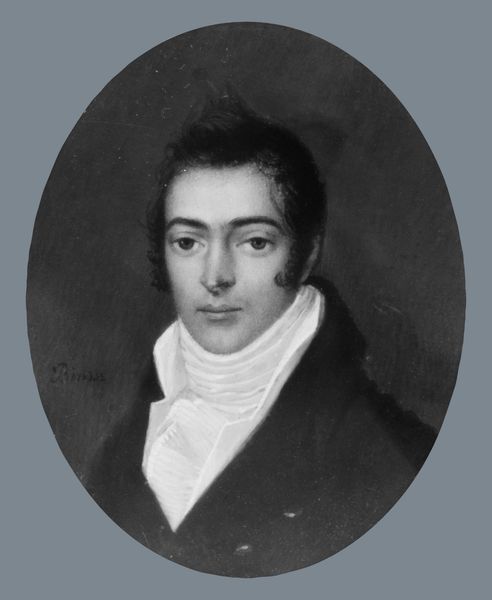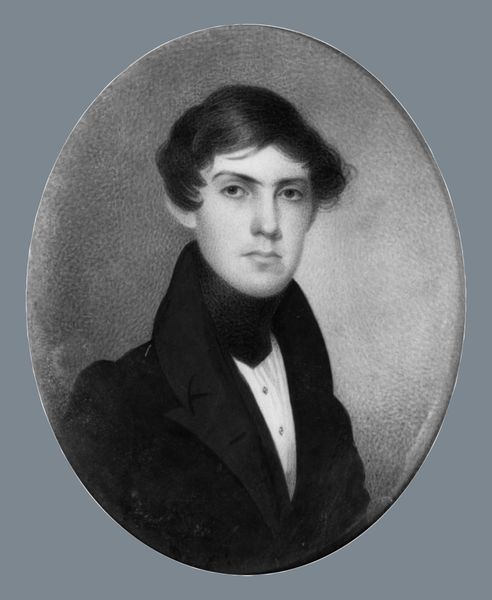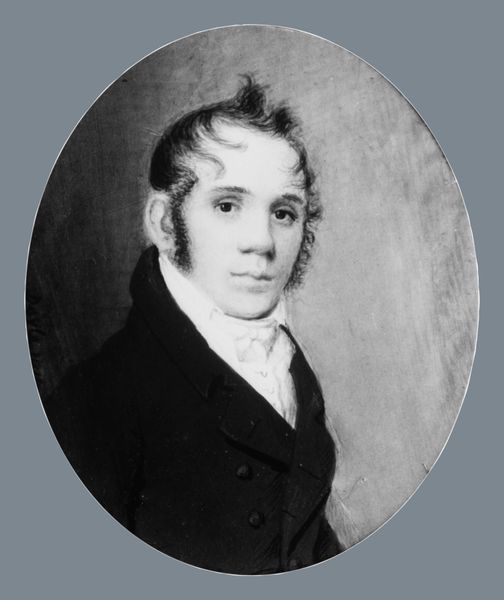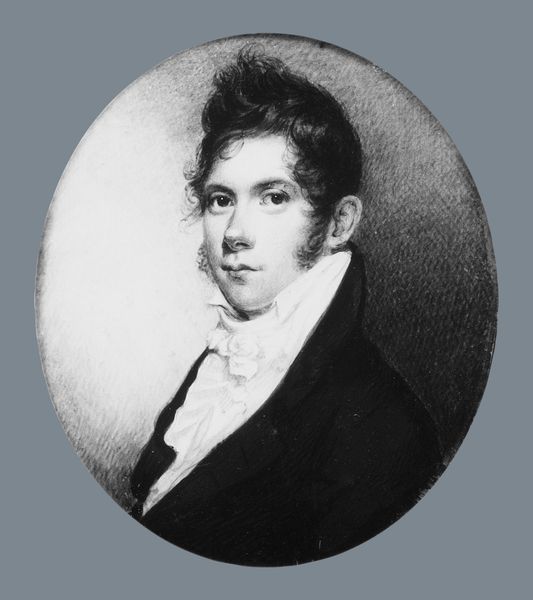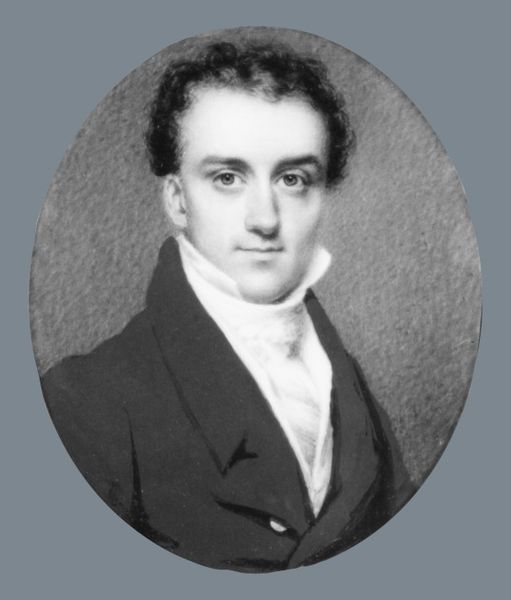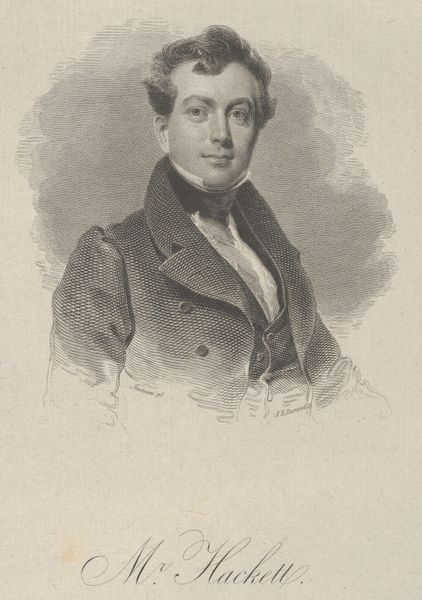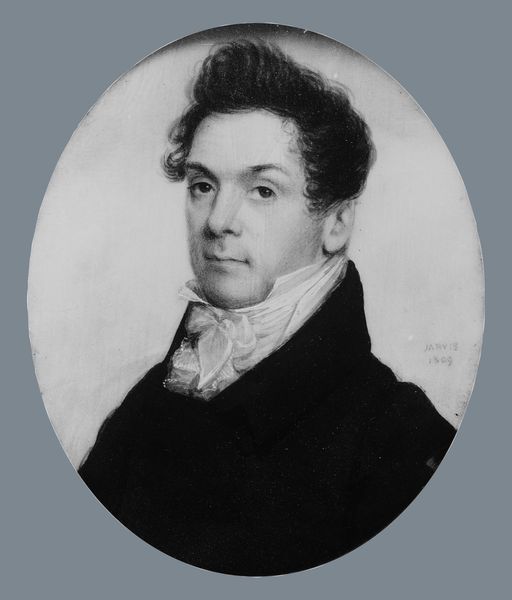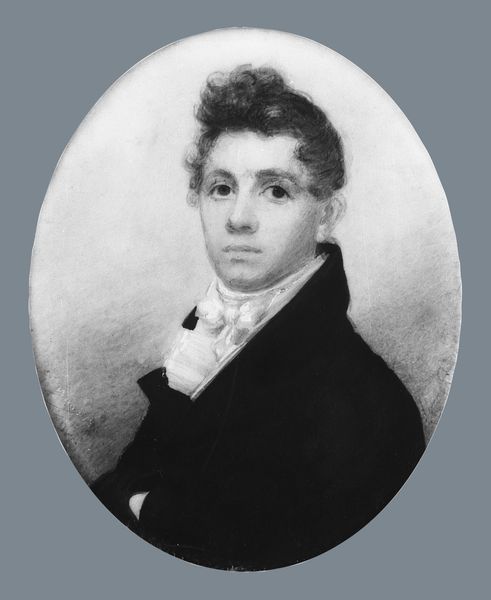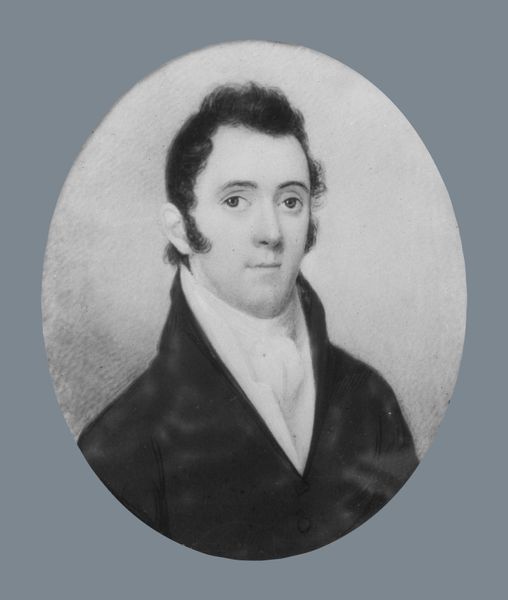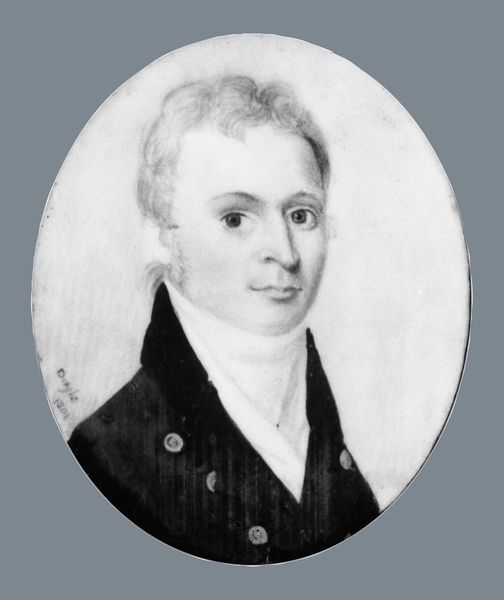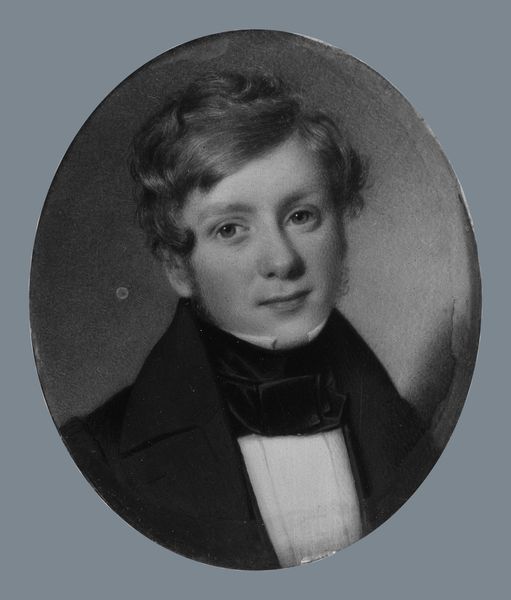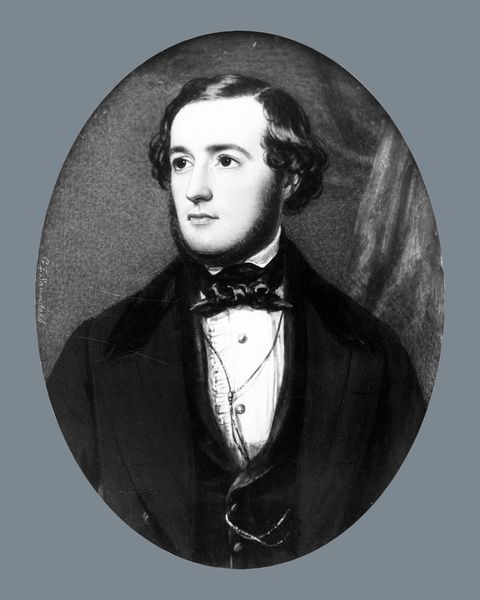
drawing, pencil
#
portrait
#
drawing
#
neoclacissism
#
self-portrait
#
portrait
#
pencil
#
history-painting
#
realism
Dimensions: 2 7/8 x 2 5/16 in. (7.3 x 5.9 cm)
Copyright: Public Domain
Editor: This pencil drawing, "Portrait of a Gentleman," is estimated to be from between 1780 and 1840. The meticulous detail and rather serious expression of the subject are striking. How do you interpret this work within its historical context? Curator: It’s crucial to see portraits like these not just as representations of individuals, but as documents of social aspirations and political ideals. This falls into the period when Neoclassicism held sway, influencing how people wished to be seen—rational, controlled, respectable. The clean lines and unembellished style, a deliberate move away from the flamboyance of the Rococo era, signaled a connection with civic virtue and intellectualism. Do you notice how this image might speak to burgeoning democratic ideals, where merit and reason were becoming more emphasized? Editor: That's a fascinating perspective. So the portrait itself is making a statement beyond simply capturing a likeness? Curator: Precisely. Portraiture served as a powerful tool in shaping public image and conveying status, which was becoming more accessible. By omitting lavish details or ostentatious displays, this portrait could imply a belief in earned, rather than inherited, social standing. What do you think that meant for the public's perception of art, then? Editor: So art became more about conveying messages about power and society and how the individual fit in? Curator: Yes, and about access, about who could commission or own it and what they were hoping to convey. It really encourages us to reconsider how art functions in defining historical narratives. Editor: I never thought of portraiture as having so much socio-political weight. I will certainly think of portraiture through this lens going forward!
Comments
No comments
Be the first to comment and join the conversation on the ultimate creative platform.
